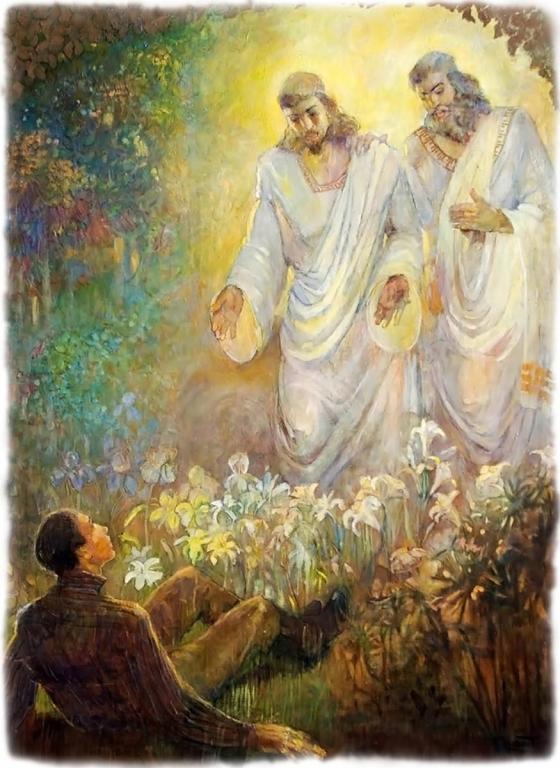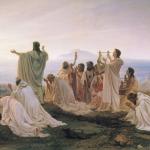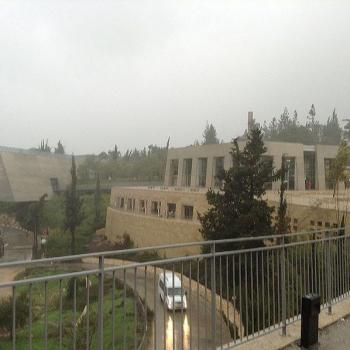
Yesterday on social media, I noticed an attack by a former Latter-day Saint on the idea of a “great apostasy” of the early Christian church. I didn’t spend much time reading what he had to say, and I’m not specifically engaging with him here — I may or may not yet do so — but I thought that I might make a general comment affirming my confidence that there was, indeed, such a universal falling away.
To me, the most obvious single pointer to the reality of a great apostasy is the Restoration itself, which would not have been necessary had there not been a comprehensive falling away. And, although there is an abundance of such evidence, the most obvious single class of evidence that God effected a restoration seems to me to be the testimonies of the witnesses of the Book of Mormon — to which, as some readers may have noticed, I’ve devoted a fair amount of time and effort over the past several years (notably including, but not limited to, the films Witnesses and Undaunted: Witnesses of the Book of Mormon) and on which a substantial and solid body of scholarship has been produced (notably including, but not limited to, Richard L. Anderson’s classic 1989 study Investigating the Book of Mormon Witnesses).
But a fundamental ancient transformation of early Christianity and of the early Christian movement — that is, a great apostasy — seems to me apparent beyond reasonable dispute. One facet of that transformation is picked up in a couple of introductory passages from the classic Hibbert lectures that were delivered by the Oxford scholar Edwin Hatch in 1888. With reference to the history of the early Church, Hatch argued that “the change in the centre of gravity from conduct to belief is coincident with the transference of Christianity from a Semitic to a Greek soil.” (Hatch, The Influence of Greek Ideas on Christianity [New York: Harper and Row, 1957], 2.
It is impossible for any one, whether he be a student of history or no, to fail to notice a difference of both form and content between the Sermon on the Mount and the Nicene Creed. The Sermon on the Mount is the promulgation of a new law of conduct; it assumes beliefs rather than formulates them; the theological conceptions which underlie it belong to the ethical rather than the speculative side of theology; metaphysics are wholly absent. The Nicene Creed is a statement partly of historical facts and partly of dogmatic inferences; the metaphysical terms which it contains would probably have been unintelligible to the first disciples; ethics have no place in it. The one belongs to a world of Syrian peasants, the other to a world of Greek philosophers. The contrast is patent . . . [T]he question why an ethical sermon stood in the forefront of the teaching of Jesus Christ, and a metaphysical creed in the forefront of the Christianity of the fourth century, is a problem which claims investigation. (Hatch, The Influence of Greek Ideas on Christianity, 1.)
And, indeed, so it does. For some of the first serious Latter-day Saint scholarship on the idea of an apostasy, I recommend Hugh Nibley’s book The World and the Prophets, which originated as a series of radio addresses on KSL, as well as three of his academic articles:
- “Christian Envy of the Temple.” Jewish Quarterly Review 50/2, (1959): 97–123.
- “The Passing of the Church: Forty Variations on an Unpopular Theme.” Church History 30/2 (June 1961): 131–54.
- “Evangelium Quadraginta Dierum.” Vigiliae Christianae 20/1 (1966): 1–24.
The World and Prophets is available in several printings. The three academic articles have been republished several times in various forms and should be easily available online.

Newly published on the blog of the Interpreter Foundation: The Heartland Versus Mesoamerica Part 11: “What Evidence Will We Accept? Faith and Forgeries,” written by Brant A. Gardner

For all of my adult life, I’ve had a difficult time winding down at night. I am a living, breathing, and frequently remorseful violation of the admonition of Doctrine and Covenants 88:124 to “retire to thy bed early, that ye may not be weary.” Late every evening, I get a “second wind” and, if I’m working on something serious, I can stay up to absurd hours of the morning. (In the past, on occasions when I’ve been home alone, I’ve done just that.)
It may seem counterintuitive, but I’ve found in recent years that it can be helpful to me to have something to look forward to reading in the evening, something that’s radically discontinuous with my daily work and that, accordingly, won’t stimulate me into thinking along academic lines or beginning to write an article. So I’ve tried reading light books that I restrict myself to looking at only after I’m in bed. Last year, for instance, I read every single one of the Jack Reacher novels, in their order of publication. I don’t entirely approve of their protagonist, but they’re quick reads and compulsively readable. (Compulsive readability wouldn’t be an especially good aid to nodding off, you might think, but they worked for me, and they also helped to pass the time on long international flights when I was too tired to do anything of value but not yet so tired that I could only watch in-flight action movies.)
Lately, I’ve read three novels by the Scottish author “Josephine Tey.” Her real name was Elizabeth MacKintosh (1896-1952), and, for whatever it may be worth, her 1951 novel The Daughter of Time, a detective work that investigated the death of the famous “Princes in the Tower”, was declared the greatest crime novel of all time by the Crime Writers’ Association in 1990. (For that posthumous honor, she beat out such titans as Agatha Christie.) Oddly, I’m not sure that I was aware of her until one of my sons called her to my wife’s attention.
Thus far, of Josephine Tey’s novels, I’ve finished The Man in the Queue (1929), A Shilling for Candles (1936, which Alfred Hitchcock made into Young and Innocent in 1937), and The Franchise Affair (1948, filmed in 1950). I’ve liked all of them but, thus far, I think that I’m somewhat partial to The Franchise Affair. Enticingly, The Daughter of Time remains in my future, yet to be enjoyed.
Sic et Non: Your one-stop shop for unsolicited theater reviews, unsought restaurant recommendations, and uninvited mystery-novel suggestions!

“Workers of the world, unite! You have nothing to lose but your chains!” It seems very possible that a Democratic Socialist may become the next mayor of New York City. This is an important development. Socialism has, of course, never really been tried before, so we need to experiment upon a human population in order to see how well it turns out. As somebody who grew up and lives far away in the West, who strongly dislikes the Yankees, who doesn’t think highly of the place, and who objects to the smug assumption that it’s the capital of the universe and that the rest of us are merely benighted provincial rubes, I regard New York City — if this step really must be taken in America — as the ideal location for the experiment. When the then-incumbent mayor of New York, Ed Koch, narrowly lost the 1989 Democratic primary to his eventual successor, David Dinkins, he famously quipped that “The people have spoken . . . and they must be punished.” Or, to borrow a helpful definition from the great H. L. Mencken, “Democracy is the theory that the common people know what they want, and deserve to get it good and hard.”

Finally, though, I close with yet another shocking exhibit from the Christopher Hitchens Memorial “How Religion Poisons Everything” File™: “The Church Donates Infrastructure to Support Municipal Food Production in The Gambia: Marketing platforms and water storage tank help women gardeners”











